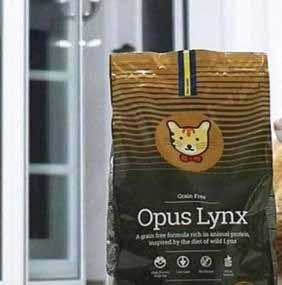
2 minute read
How cats’ nutritional needs are different from those of dogs?
The cat is considered by scientists to be a strict carnivore and the dog is considered to be an omnivore. Both species are in the Class Mammalia and the Order Carnivora, but here’s the difference: the cat cannot sustain its life unless it consumes meat in some form. Dogs, however, can survive on plant material alone; they do not have to consume meat. But always keep in mind that dogs do best and by nature are primarily meat-eaters. Just because by definition they are omnivores (can digest and utilize plant and animal food sources) does not mean that plant material alone makes a good source of nutrition for the dog. Far too many dogs have been undernourished by those cheap grain-based dog foods.
And grain-based cat foods are even worse.
Advertisement
A good way to think of it is that cats are carnivores, dogs are omnivores, but they both have evolved as hunters of other animals in keeping with their nature as meat-eaters.
Numerous chemical substances are required for a cat to remain alive. These substances, some very complex chemical molecules and some very basic and simple must be provided along the internal chemical reaction pathways at all times. Like other living plants and animals, the cat can manufacture most of its own required substances within its own body’s chemical factory. For example, vitamin C is a requirement for lifesustaining processes for us Mammalia, and dogs and cats make plenty of their own within their body’s chemical factory -- the liver. We humans don’t make enough within our body chemical factory. To keep ourselves alive we have to find some vitamin C already made (preformed) somewhere in our environment, gather or capture it, then eat it. Without vitamin C, we’d die.
Dogs and cats don’t have to worry about gathering, capturing, and eating another preformed vitamin C. They don’t care where their next grapefruit will come from because they make all the vitamin C they need inside their own personal chemical factory. On the other hand, there are numerous nutrients and chemicals that cats need that they can only acquire if they eat animal-derived tissues. That is, they need to prey on other living creatures that do make the essential chemicals that cats don’t! Out of necessity, the cat has evolved ways to hunt down, capture, and eat this prey in order to “borrow” the prey’s nutrients.
For example - Vitamin A also called retinol, a vitamin required at the cellular level by both cats and dogs.
Cats – Process little or no enzymes that will transform the plant-produced carotenoids. Must eat preformed active vitamin A (that is, vitamin A that already has been converted from carotenoids to its active form by some other creature such as a mouse or rabbit).
Dogs – Have enzymes in the lining of the intestine that can transform plant carotenoids and convert these into active vitamin A.














